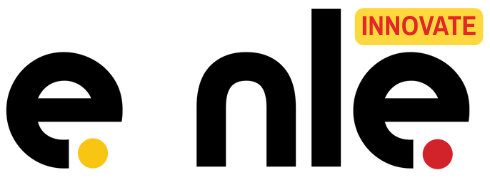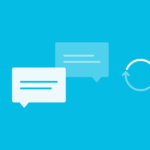Understanding Your Bold Idea
Defining a bold idea is a crucial initial step that can significantly influence the journey from concept to prototype and, ultimately, to market success. Before execution, it is essential to identify the problem your idea addresses. Every successful product or service emerges from a solution to a specific issue faced by potential users. To capture the essence of your vision, delineating this problem clearly will allow you to align your efforts with market needs.
Equally important is understanding your target audience. Knowing who will benefit from your idea helps in tailoring features, marketing strategies, and user experiences. Conducting thorough market research provides insights into your audience’s preferences, behaviors, and pain points. This understanding forms the foundation on which you can build your prototypes and forge connections with users that resonate.
Furthermore, your bold idea must stand out in a competitive market. Assessing what makes your concept unique will not only aid in developing a compelling value proposition but will also attract potential investors and stakeholders. A comprehensive analysis of existing solutions can highlight gaps your idea fills, enhancing its marketability.
To ensure clarity in articulating your vision and goals, consider using a checklist that helps validate the uniqueness and potential impact of your idea. This checklist may include questions such as: What specific problem does my idea solve? Who are the primary users, and what demands do they express? How does my concept differentiate itself from existing solutions? Answering these questions will provide a clearer picture of your idea’s viability and pave the way for effective communication and execution.
Creating a Prototype: Turning Concepts into Tangible Products
Developing a prototype is a pivotal step in transforming bold ideas into viable products. A prototype serves as the first tangible representation of a concept, allowing creators to visualize and refine their vision. One of the most effective approaches to this process is to develop a Minimum Viable Product (MVP), which focuses on core functionalities and essential features. This strategy not only facilitates quicker market entry but also helps in gathering valuable user feedback at an early stage.
Various prototyping methods can be employed depending on the resources available. Digital mockups and wireframes are particularly popular among startups, as they provide a cost-effective way to sketch out ideas and receive initial reactions. These methods allow innovators to present their vision without investing significant time or money in full-scale development. Tools like Sketch, Figma, and Adobe XD enable creators to produce high-fidelity representations of their concepts and foster collaborative feedback sessions.
When selecting the right prototyping approach, it is crucial to evaluate the specific needs of the project, resource availability, and the intended audience for feedback. Founders should consider whether they require a simple visual representation to communicate ideas or a more interactive experience that allows for user testing. Additionally, iterating on the prototype is vital; as feedback is gathered, refining the design will lead to improvements that align with user expectations and market demands.
To assist in this process, templates can be invaluable for outlining the necessary features and functionalities of a prototype. These templates guide founders in prioritizing elements based on user needs and market viability, ensuring that the final product not only reflects the original concept but also satisfies user requirements. By focusing on these aspects, innovators can effectively bridge the gap between idea inception and product realization.
Gathering User Feedback: Testing the Waters
Collecting user feedback is an essential part of the product development process, particularly during the transition from concept to prototype. This feedback serves as a crucial indicator of whether a design meets the users’ needs and expectations. Various strategies can be employed to effectively gather and analyze user feedback, each offering distinct advantages.
One widely-used method is conducting surveys. Surveys allow for the collection of quantitative data, providing insights into user preferences and behaviors. They can be easily distributed online and tailored to meet specific objectives. By using a mix of open-ended and close-ended questions, founders can gauge user satisfaction and uncover areas that require improvement. This method is particularly useful for reaching a broader audience and gaining statistical relevance.
User testing is an invaluable strategy that involves observing users as they interact with a prototype. This qualitative assessment offers firsthand insights into real-time user experiences and uncovers usability issues that might not have been anticipated. Various testing environments can be leveraged, from in-person sessions to remote testing, depending on the target audience. Feedback gathered through this method is often richer and more nuanced than survey data, offering qualitative context that can inform iterative design changes.
Focus groups, which facilitate group discussions among users, can elicit diverse perspectives and foster creative thinking. This method allows for dynamic interaction that can generate new ideas or identify potential obstacles. While focus groups can provide in-depth qualitative insights, they may not always reflect the views of the broader user population accurately.
Once data is collected from these various methods, interpreting this feedback effectively is vital. Founders should develop user feedback checklists to highlight key findings and prioritize areas for refinement. By categorizing insights into themes, it becomes easier to identify critical areas for improvement while minimizing risks associated with future investments. Thoughtfully applying user feedback can significantly enhance the prototype and overall product viability.
Iterating and Scaling: From Feedback to Final Product
In the journey of transforming a concept into a fully realized product, the process of iteration is paramount. This process allows for the incorporation of user feedback, which is invaluable in refining the prototype. By actively engaging with potential users, founders can gain insights that illuminate the strengths and weaknesses of their product. These insights foster a collaborative environment where ideas can be tweaked and improved upon, ensuring that the final version will resonate with the target audience. Utilizing methodologies such as agile development can accelerate this feedback loop, yielding rapid iterations that significantly enhance product quality.
As a product moves closer to market readiness, it is essential to align these iterations with overarching business goals. Each iteration should not only focus on enhancing user experience but should also ensure that it meets the strategic objectives of the organization. A misalignment at this stage could lead to the development of features that do not serve the market effectively or divert resources away from core priorities. Therefore, creating a balanced approach between user feedback and business alignment is crucial.
To streamline the transition from prototype to market launch, it is beneficial to have a checklist that addresses all critical feedback points. This checklist should include components such as validating the user experience, ensuring robust functionality, and verifying that the product meets regulatory requirements. By systematically evaluating each of these areas, founders can minimize risks and maximize their chances of successful scaling. Thus, the iterative design process, supported by user feedback, serves as the foundation upon which the final product is built, ensuring a smooth transition to market availability.







Leave a Reply